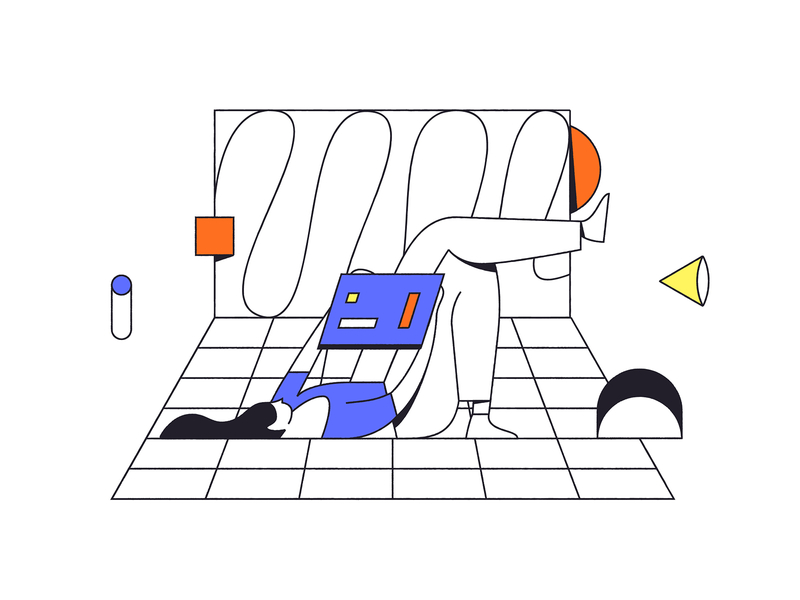In this post, our friends at Marketing Essentials break down conversion rate optimization (CRO) for web designers, and how it can take your design expertise to the next level.
If the word CRO brings to mind a feathery black creature—well, you’re not wrong. But CRO—conversion rate optimization—is a mindset that can help you take your UX/UI design expertise to the next level. In this post, we break down CRO and how you can use it to improve your designs and increase value for clients.
What the heck is CRO?
CRO is all about making small tweaks to different elements of your site to learn what visitors respond to best and, ultimately, get more people to convert on your site. And conversions could be anything from clicking a button to get more information, to filling out a form, to tapping your number to call. The goal of any good website should be to elicit more conversions.
Now, let’s cover something that often comes up when we discuss CRO - and it’s a huge pet peeve. There’s no silver bullet for increasing conversions on a site.
So when you read articles saying things like “Purple buttons increase CTAs” or “This is the perfect landing page layout,” take them with a grain of salt. CRO is all about testing and testing (and testing) different elements on your site to see what works best for your audience.
Is doing CRO worthwhile?
Some people think CRO isn’t worth it because you might only be getting a few extra conversions from your changes.
Let’s look at an example. If purchasing a certain item on your site brings you revenue of $50, and you get 100 more people in the course of a year to purchase, that’s an additional $5,000. That’s a pretty simplified example, but it shows the power of conversion rate optimization.
What should I test?
Once you start to realize the power of conversion rate optimization, it’s time to decide what you want to test. While pretty much anything can be tested, focus on what will make the biggest difference for your site.
That might be a form that contacts sales, or a click-to-call button. Whatever you choose, think about where those big, important touchpoints are and go from there.
How do you know this? Check your analytics—what are your highest-performing pages? What parts of your website will make the most significant difference if you could get more people to convert? Try testing those first to get the momentum going.
Do I need any special tools?
You don’t necessarily need any special tools for CRO if you can keep track of the results, like knowing how many items were sold or how many new people contacted you from your website.
But, it can be a lot easier with a couple of tools in your tool belt, including:
- Google Analytics — For tracking more subtle metrics like how many people went to a landing page or clicked a specific button.
- Hotjar or Lucky Orange — Heatmap tools like these can show you exactly where people are clicking on your pages, how far they’re scrolling, and more.
- Google PageSpeed Insights — If it’s critical that your pages load quickly (and it should be), this is a free and simple way to check for speed.
- Asking customers for feedback is a great way to improve your site. You can do this through an email request or even a simple survey using Google Forms.
- More advanced CRO testing can be done through a tool like Google Optimize or HubSpot if you have the budget and knowledge.
Tracking and reporting on CRO-related changes for your site or your client are where the value comes from as you figure out what’s improving. Next, we’ll discuss how you can set up your very own CRO experiment! (Cue beaker bubbling noises.)
How do I run a CRO experiment?
Identify what you want to test and find a system to help you keep track of results, like a spreadsheet. Think back to your high-school science classes and form a hypothesis of what you think will happen once you test.
Here’s the tricky part for most people: Choose a single item per page or conversion path to test, like a button placement. That way you know any changes came from that edit and not something else. You may be eager to test a whole bunch of things at once. But hold back! Test a single item at a time.
Next, make the change on the live site and note it in your spreadsheet, and let the test run for a set amount of time.
At this point, here’s a quick note about statistical significance and sample size (bet you didn’t think we’d be talking about this stuff today!). Basically, to know with certainty that a certain result is reliable, you need a large enough group of people testing it (sample size) to achieve clear results (statistical significance). This means that the more time you let your test run, the more people will have a chance to respond, and the clearer your results will be.
You can check in on your experiment while it’s running, but resist the urge to make any additional changes until it’s complete.
Once your experiment has run for a set period of time, look at the results. Did the test achieve what you thought it would? If not, that’s actually not a bad thing—because you still got a clearer picture of what worked for your audience. Also, most tests do fail, so don’t be discouraged. Just keep testing! It’ll make you a better designer and make you invaluable to your client ■
For more insights on CRO for web design, check out Marketing Essentials’ podcast episode: All Things Websites: Part 4 - The Importance of Conversion Rate Optimization
About the Authors: Jenna Schultz is a UX/UI Web Designer & Developer and Jessica O’Brien is a Content Strategist at Marketing Essentials, an inbound digital agency in Minster, Ohio. Together, they bring a combined 15+ years of marketing experience to clients across the country.
Find more Process stories on our blog Courtside. Have a suggestion? Contact stories@dribbble.com.











